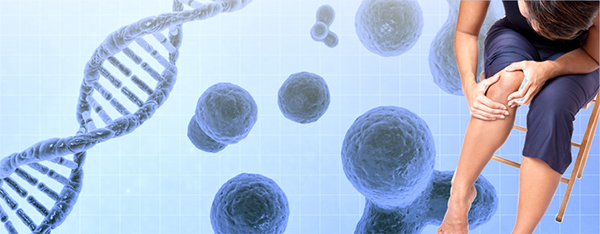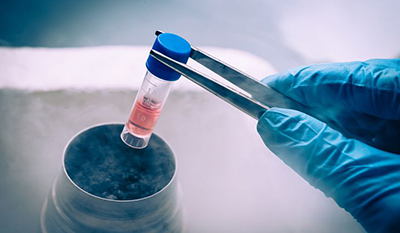
What are Orthobiologics?
Orthobiologics are natural substances such as cells, tissue, blood components and growth factors that are harnessed to aid in the treatment of orthopedic injuries or conditions. They may be used to replace lost tissue, stimulate regeneration and healing, reduce pain and inflammation and improve joint function.
Orthobiologics may be obtained from your own body or from a donor. They may be administered in the form of injections or may require a surgical procedure. They may be used alone as a conservative treatment or following orthopedic surgery for improved results.
What are the Conditions Treated by Orthobiologics?
Orthobiologics can be used to treat a wide range of orthopedic conditions such as:
- Articular cartilage injuries
- Early osteoarthritis
- Muscle injuries
- Ligament injuries
- Tendon injuries
- Broken bones
When are Orthobiologics Recommended?
Orthobiologics may be recommended when your symptoms are not relieved by rest, medications and physical therapy and joint replacement surgery is not indicated. It may also be recommended following orthopedic surgery.
Types of Orthobiologics
The different types of orthobiologics include:
Platelet Rich Plasma (PRP)
PRP is obtained from your own blood after it has been processed to concentrate platelets and certain white blood cells that enhance healing and reduce inflammation. PRP may be injected directly into the damaged tissue during an outpatient procedure or following repair surgery.
Bone Marrow Aspiration Concentrate (BMAC)
BMAC is obtained after processing bone marrow that is removed from your pelvic bone. BMAC is rich in stem cells, which produce proteins and growth factors necessary for healing and reducing inflammation.
Amniotic Products
Amniotic tissue products such as amniotic membrane and amniotic fluid can reduce inflammation and promote healing in tissues due to their cellular content and presence of hyaluronic acid. Amniotic tissues support the fetus in the womb. They are obtained from a consenting healthy donor following an elective cesarean section delivery. These products are carefully screened before use. They are available as injections or patches.
Stem Cells from Wharton’s Jelly
Wharton’s Jelly is the connective tissue surrounding vessels in the umbilical cord. It is a rich source of precursor mesenchymal stem cells. The umbilical cord is donated by consenting mothers following delivery. The blood vessels are removed from cord tissue to isolate Wharton’s Jelly and the stem cells are obtained from Wharton’s Jelly using aseptic techniques. These products can be stored for a prolonged duration and do not usually cause an immune reaction when used. Wharton’s Jelly stem cells are injected into the affected joint followed by a series of 3-4 ozone injections, and the treatment package includes the initial visit as well as follow-up visits.
With stem cell therapy becoming increasingly popular, there are more stem cell providers and suppliers in the market which has helped reduce the prices. At Advanced Orthopedics of South Oregon, we are now offering high-quality stem cell treatments at a much affordable cost.
What We Do
At Advanced Orthopedics we use umbilical cord stem cells and amniotic products. This source for mesenchymal stem cells is selected because we believe that this is currently the best source of stem cells and growth factors available. This choice is based on exhaustive examination of the available research that has been performed throughout the world.
We obtain our HCT/Ps from Predictive Biotech, a Salt Lake City Utah based company that harvests and prepare these products for homologous use. These products have been certified using flow cytometry to contain 1 million+ viable stem cells for implantation. The products we use are:
Corecyte - Minimally manipulated stem cells derived from the umbilical cord. It is intended to repair and regenerate damaged tissue. The umbilical cords are donated from healthy mothers who have had a c-section and follow all the FDA guidelines regarding tissue procurement.
Polycyte - Minimally manipulated tissue suspension derived from Wharton’s Jelly of the umbilical cord. This contains a higher concentration of hyaluronic acid up to 50x.
Amniocyte - minimally manipulated amniotic fluid matrix that is a match for joint fluid. It exhibits anti-scarring, anti-adhesion and anti-inflammatory properties.
On December 23, 2014, the FDA announced a new draft guidance document entitled “Minimal Manipulation of Human Cells, Tissues, and Cellular and Tissue-Based Products”. The draft guidance document advises manufacturers of human cells, tissues, and cellular and tissue-based product (HCT/P) products and healthcare providers of the FDA’s current policy on the minimal manipulation criterion of 21 C.F.R. § 1271.10(a)(1).
Minimally Manipulated
- For structural tissue, processing that does not alter the original relevant characteristics of the tissue relating to the tissue’s utility for reconstruction, repair, or replacement; and
- For cells or nonstructural tissues, processing that does not alter the relevant biological characteristics of cells or tissues.
Whether a HCT/P is more than minimally manipulated is of utmost importance when assessing the regulatory status of a HCT/P product. Under 21 C.F.R. § 1271.10(a), for an allogeneic HCT/P product to qualify as a HCT/P that does not require a biologics license application or new drug approval, the product must meet four criteria: (1) it must be minimally manipulated, (2) it must be intended for homologous use, (3) the manufacturing, with some exceptions, “does not involve the combination of the cells or tissues with another article,” and (4) the product “does not have a systemic effect and is not dependent upon the metabolic activity of living cells for its primary function.”
The Procedure

Getting stem cells injected into the joint is a very fast and typically a painless procedure. It is as simple as getting any other injection. No blood collection is involved. No machines are involved. The products are taken out of cryopreservation and thawed in a specialized warmer for 5 minutes at which time they are ready for use.
- The joint to be injected is isolated, prepped in a sterile fashion and draped to keep the area sterile.
- An anesthetic is injected into the area to decrease needle penetration pain.
- A small gauge needle is guided ultrasound into the joint.
- The HCT/P products are then injected
- An elastic bandage is place over the penetration site if necessary
- This whole process takes approximately 20 minutes. The patient leaves immediately after the procedure with little to no down time.
Cost of Procedures
This cost is significantly less than the cost for surgeries, not to mention the cost often associated with the prolonged recovery periods and inability to work. A stark contrast can be appreciated when comparing the average cost of a knee replacement in the United States, $31,124, with the cost of our procedure. This is only for the surgery. Also, many people don’t have insurance, their insurance plans don’t cover many of the potential surgeries, or they have high deductibles that haven’t been met. Unfortunately, at this time most insurance companies still won’t cover regenerative medicine treatments that Advanced Orthopedics provides. This will likely change in the future when the insurance companies recognize the significant savings that they can reap with our procedures compared with the cost of surgery, and the excellent success rates and patient satisfaction that is currently being seen.



 Book an Appointment
Book an Appointment
 Patient Portal
Patient Portal